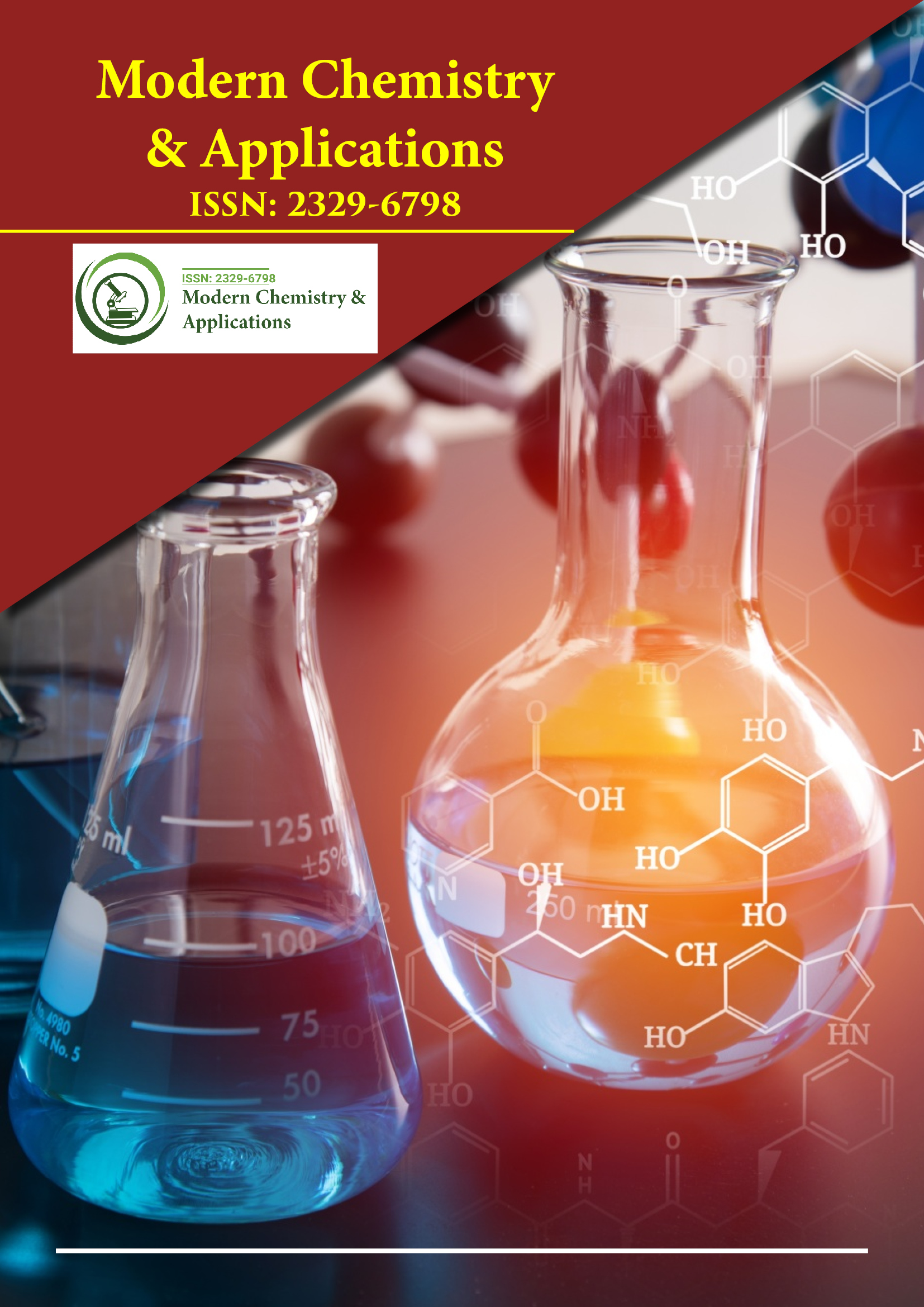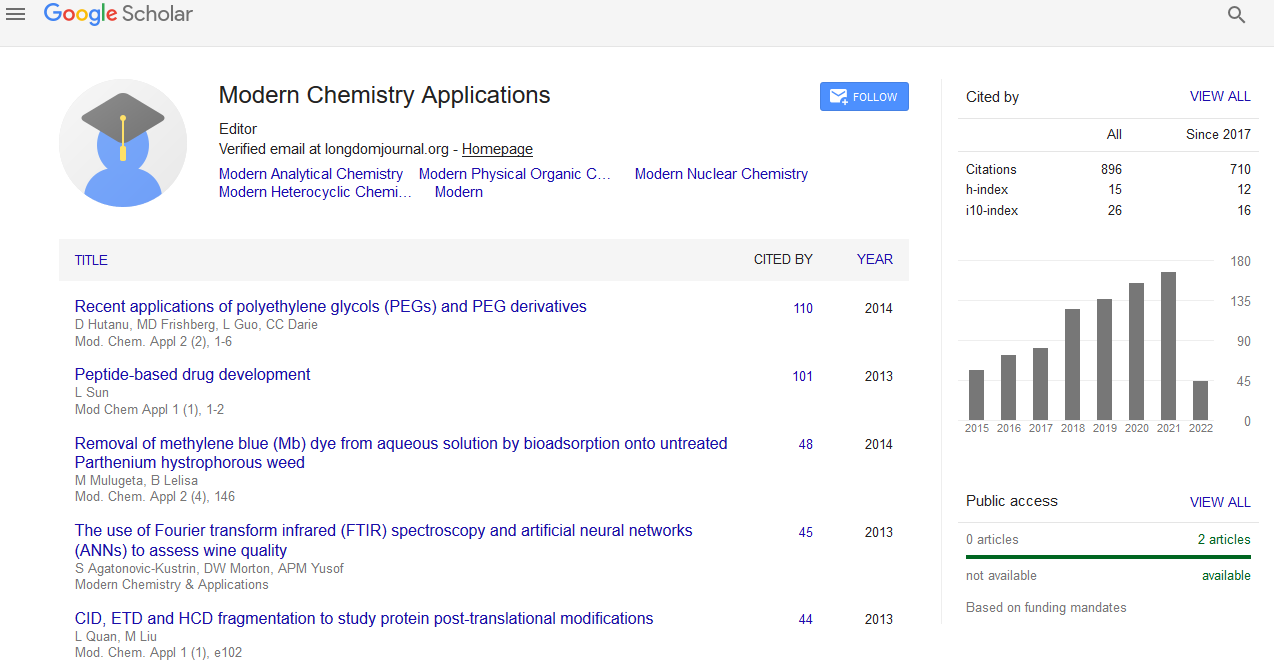Indexed In
- Open J Gate
- JournalTOCs
- RefSeek
- Hamdard University
- EBSCO A-Z
- OCLC- WorldCat
- Scholarsteer
- Publons
- Geneva Foundation for Medical Education and Research
- Google Scholar
Useful Links
Share This Page
Journal Flyer

Open Access Journals
- Agri and Aquaculture
- Biochemistry
- Bioinformatics & Systems Biology
- Business & Management
- Chemistry
- Clinical Sciences
- Engineering
- Food & Nutrition
- General Science
- Genetics & Molecular Biology
- Immunology & Microbiology
- Medical Sciences
- Neuroscience & Psychology
- Nursing & Health Care
- Pharmaceutical Sciences
Cross-linked polyacrylamide film as gel polymer electrolyte for rechargeable hybrid aqueous batteries
5th Global Chemistry Congress
September 04-06, 2017 | London, UK
Zhansaya Mukanova, Zhalgas Kulametov, Almagul Mentbayeva and Zhumabay Bakenov
Nazarbayev University, Kazakhstan
National Laboratory Astana, Kazakhstan
Institute of Batteries, Kazakhstan
Posters & Accepted Abstracts: Mod Chem Appl
Abstract:
Nowadays, rechargeable aqueous lithium-ion batteries (RALB) are attracting an increasing interest. Main challenges faced in conventional Li-ion batteries research are related to safety concerns associated with usage of organic electrolytes, high productions costs as well as overall need for enhancement of physical and electrochemical properties. Replacing of flammable, toxic and expensive organic electrolytes by aqueous has several advantages in ecological and economical point of view. Earlier the system of lithium iron phosphate (LFP) and Zn metal which has promising results have reported [1]. But after numerous cycles on surface of Zn metal occurs dendrites and water loses from system negatively effects on cyclability and capacity of RALB. Therefore, it is interesting to use stable polyacrylamide gel (PAAG) instead of widely used AGM separator. Composite gel polymer electrolytes PAAG for RALB (RALBs) have been prepared by simple ionic polymerization and cross-linking methods and absorbing an aqueous electrolyte solution. Several compositions with different cross-linking degree were investigated. The batteries were assembled from a cathode containing LiFePO4 â?? a lithium intercalation compound, a zinc metal foil anode and a electrolyte containing Zn2+ and Li+ ions. Stability and morphology of the membranes and an electrolyte uptake and retention properties were tested. The RALBs assembled from gel polymer electrolyte provided high specific discharge capacity, up to 140 mAh (g LiFePO4) at 0.5 C, and the cyclability of such systems was significantly enhanced compared to the RALBs assembled with AGM and liquid electrolytes.


